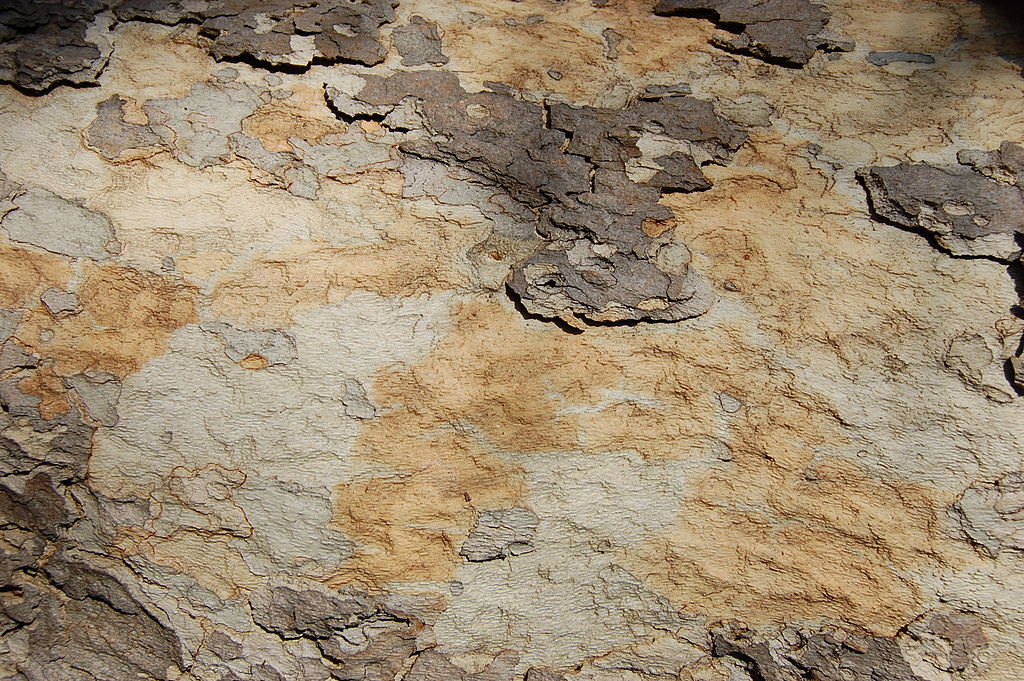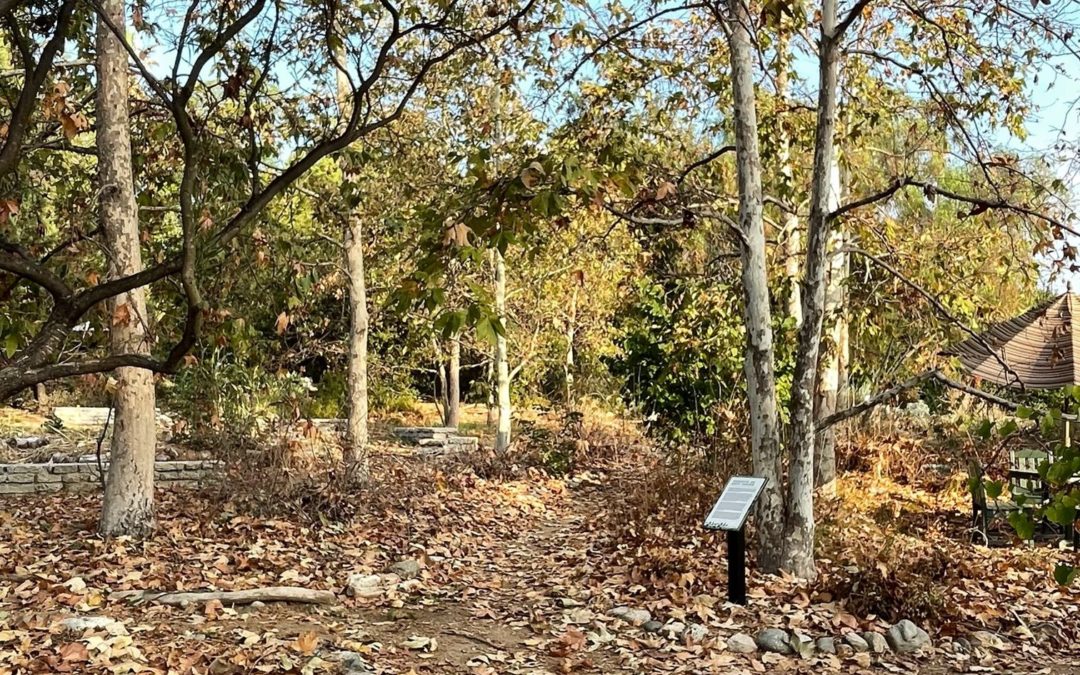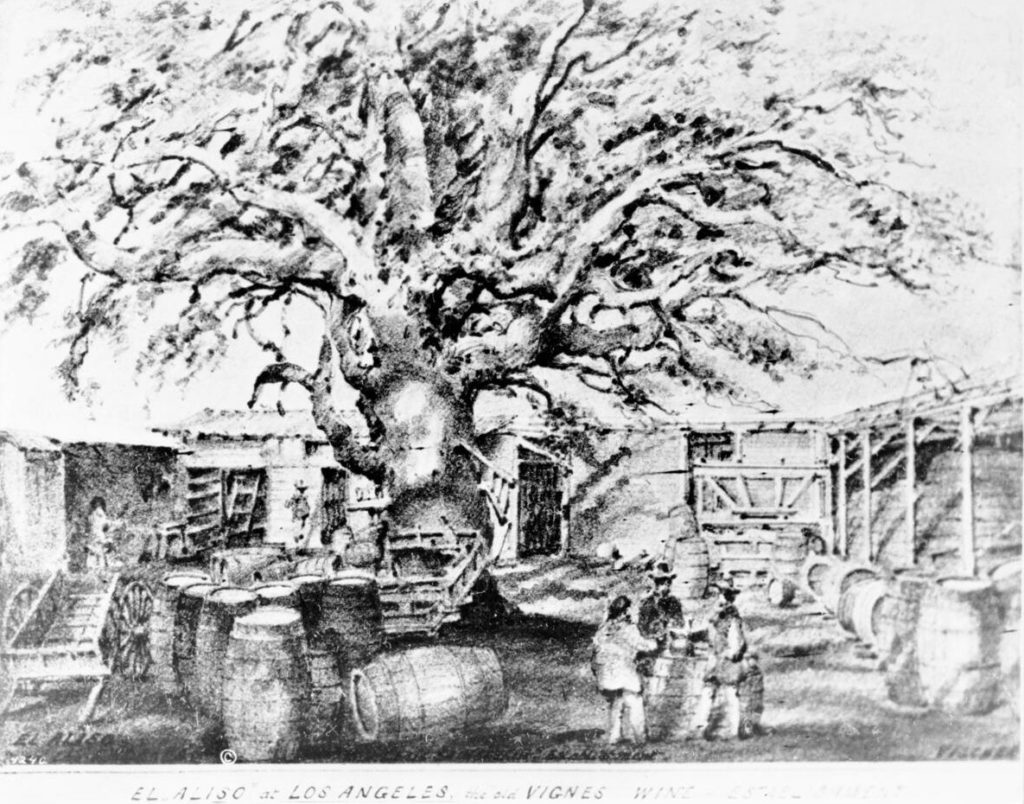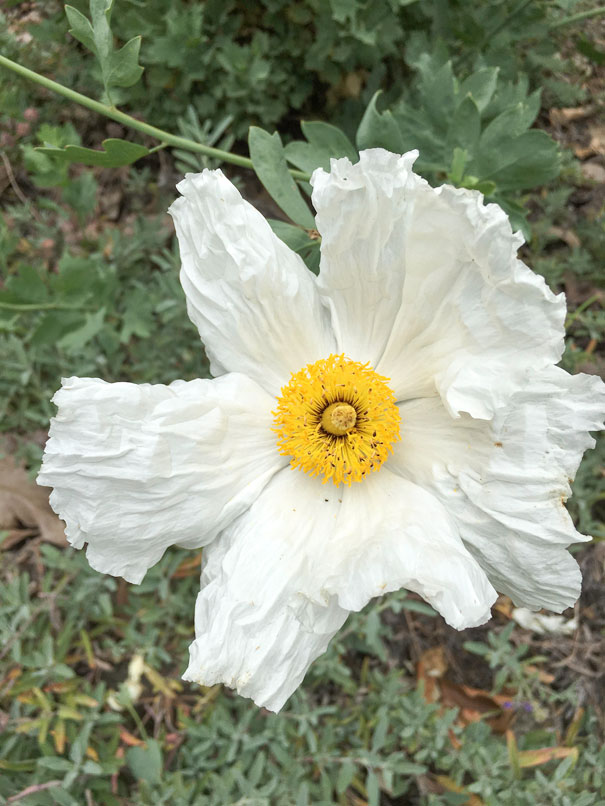Arlington, Overworld is a monthly series devoted to the ecology, history, horticulture, and biology of plants in Arlington Garden. The “overworld” is the highest-level map of a videogame showing mountains, forests, kingdoms, dungeons, and treacherous wastes. Not part of normal gameplay, the overworld facilitates progression from level to level — A.J. Jewell.
Western sycamore: Planatus racemosa, aliso (Spanish), sā-vār or shă-var’ (Tongva)
Origin: California Floristic Province, riparian areas near the coast and some inland areas
Mature height and width: 40-80 ft. tall, 30-50 ft. wide.
Gardening notes: winter deciduous; thrives with significant amounts of water in well-draining soils; best planted near swales, streams, or seeps; otherwise supplemental moisture is required.
SYCAMORE TREES ARE APPARITIONS of riparian or seasonally wet habitats across Central and Southern California extending into Mexico. The pale white and grey trunks of mature specimens can reach several metres in circumference, growing at odd angles from the ground with branches gnarled and leaves muttering in the wind. The local El Cajon author and postal worker W.S. Head fancifully but correctly called this species “the Queen of the elfin forest” and cites “someone” as calling it “the ghost that stands with its feet in the water” [Head, 41].
THE ARROYO SECO FOREST
Arlington’s western sycamores grow at the bottom of the slope running the length of the garden. The garden is designed to channel rainwater down the incline and sink it into the ground via a series of large swales. When it rains, this section of the garden becomes a temporary flooded wetland: ideal habitat for this species.
The water in this wetland eventually ends up in the Los Angeles River, which is just to say that we are in the Los Angeles River watershed. The garden borders the Arroyo Seco Watershed to the west, itself a part of the larger Los Angeles Watershed, and once home to many western sycamores.
The Arroyo Seco is the prominent river of the Pasadena area. Although it contains relatively little water for much of the year, for millennia it has been the site of cataclysmic floods carrying sediment and uprooted forests down the mountains. The flood of 1861, for example, was described 29 years later in starkly biblical terms: it was as if “the windows of heaven were opened, and the waters prevailed exceedingly on the face of the earth.” According to reports, the effects of the flood were multiplied by a raft of “driftwood,” no doubt containing many sycamores, pulled down the arroyo, forming small dams that channelled floodwater to-and-fro in all directions [Gunn, 1890]. In response to another massive flood five decades later, the river below Devil’s Gate Gorge was straightjacketed in concrete starting in the 1930s.*
Western sycamores require large flood events to reproduce in quantity as flooding is thought to deposit the clean silt, cobble, and gravel conducive to seed germination [San Francisco Estuary Institute]. Likely because the Arroyo floods are now gone, the channelization complete, the sycamore forest surrounding the river is much reduced.*
Drawing by Edward Vischer depicting a heavily pruned El Aliso at the Vignes Winery in Los Angeles.
EL ALISO
For reasons unknown to the author of this column, the Spanish word “aliso,” which means “alder,” is used to refer to western sycamores. The most famous aliso probably ever was called “El Aliso”— “the sycamore”— its name a bit literal in one sense and confusing in the other, since “aliso” means alder, but the definite article showing, at any rate, that it was peerless, the only real Aliso in a vast countryside of mere alisos.
El Aliso stood in Yangna (or Yaangna), an indigenous village once located where the present-day 101 freeway runs through downtown Los Angeles (LAPL, HMDB). The tree was truly enormous. It stood over 60 feet tall. Its trunk measured 20 feet in circumference. Its canopy stretched 200 feet across. A drawing of the tree by the artist Edward Vischer in the 1800s shows a smooth trunk terminating abruptly in a bundle of muscular arms resembling a giant squid.
The tree was a sacred site to the native people of Los Angeles County – the Tongva, Kizh or Gabrieleño – who gathered under its branches and used the surrounding area as a burial site (HMDB). In the 1830s, a French immigrant constructed a winery near the tree – did he know it was a burial site? – and, over the ensuing decades, the operation changed and expanded until the tree was fenced in on three sides. This was not habitat healthy for the tree; it eventually succumbed to convenience and disregard for the older world that was swiftly becoming Los Angeles [KCET].
In 2019, the City of Los Angeles installed a historical marker for El Aliso in an unwalked strip of pavement between a strip club and the freeway. Tall stands of invasive weeds grow along one side and razor wire sprouts along the other, but it is near the original site of the tree. Chief Ernie P. Tautimez-Salas, who wrote the inscription, ends it with this promise: “while its physical presence is gone, the oral history handed down through the generations has kept its beauty and story alive in the Kizh people.” [HMDB].
 Eugene Zelenko, CC BY-SA 4.0 via Wikimedia Commons
Eugene Zelenko, CC BY-SA 4.0 via Wikimedia Commons
A MNEMONIC DEVICE
Observe the thin dappled bark and twisted boughs of a Planatus racemosa tree. Touch the smooth bark on the trunk – can you feel the slightly raised edge between the lighter patches of bark and the darker patches? The outer-bark does not expand at the same rate as the interior bark, so the outside layer sloughs off, forming a mottled pattern. This distinctive pattern, combined with the trees’ twisted boughs, suggests that sycamores have some sort of attractive illness. Mostly, they don’t: nonetheless, the impression is a good mnemonic device, since “sycamore” is pronounced just like “sick-amore.”
*Devil’s Gate Gorge is a namesake of Satan whose horned profile is seen in nearby rock formations.
Additional Select References
Guinn, J.M. Exceptional Years: History of California Floods and Drought. Historical Society of Southern California. Los Angeles (1890), Volume 1.
Head, W.S. The California Chapparal: An Elfin Forest. Naturegraph Publishers, Happy Camp (1972).
McCawley, W. The First Angelinos: The Gabrielino Indians of Los Angeles. Ballena Press, Maliki Museum Press, Banning (1996).
Perry, Robert. Landscape Plants for California Gardens. Land Design Pub., Los Angeles (2010).
Ritter, M. California Plants: A Guide to Our Iconic Flora. Heyday Press, Berkeley (2018).
Essays in Arlington, Overworld are copyright A.J. Jewell 2022.





Recent Comments